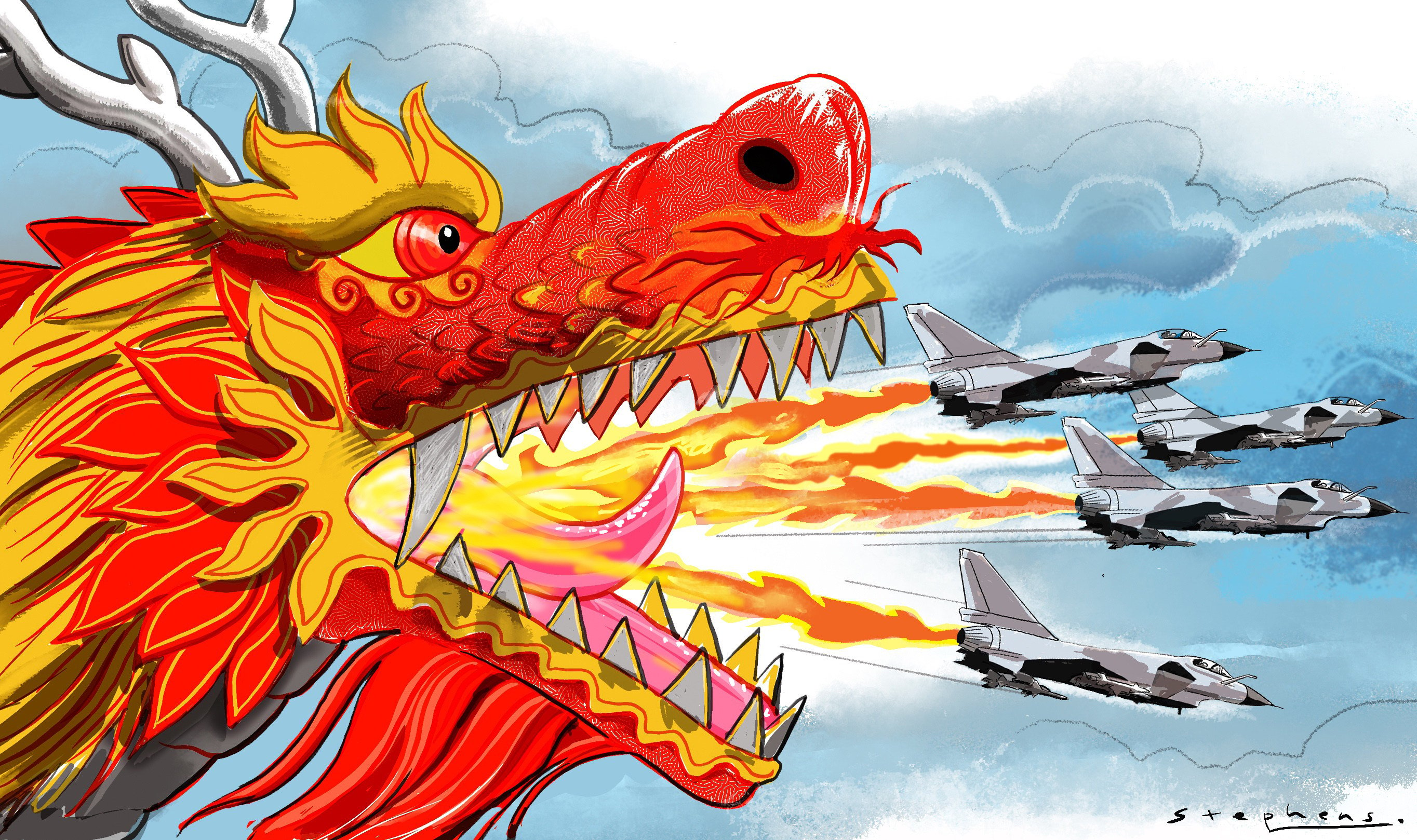4 lessons for China as Pakistan J-10s down Indian Rafale jets
It is a boost for China’s defence industry, arms exports and the PLA’s confidence – and should encourage Beijing to increase its nuclear stockpile

This is another “DeepSeek moment” for China. By now, the world will have heard of how the Pakistan Air Force used Chinese-made J-10 fighter jets with Chinese-made PL-15 missiles to shoot down India’s French-made Rafale fighter jets, its best enlisted combat aircraft.
What lessons might Beijing draw? First, this is a milestone for China’s defence industry. Until now, China’s state-of-the-art weapons have had no real chance of proving their reliability or lethal power. China has not been at war in more than four decades. Development has been the largest dividend of peace and China’s long march of self-reliance and innovation is producing results.
The 1991 Gulf War was a wake-up call for China to modernise the People’s Liberation Army (PLA). The US-led coalition’s attack on Iraq showed China what a modern war looked like – and how inadequately prepared the PLA was. Chinese defence, heavily influenced in its early years by Russian systems, has now become a hi-tech modern force developing sophisticated weapons of its own.
China reportedly leads in developing and testing a fractional orbital bombardment system that uses a hypersonic glide vehicle on a low-Earth orbit to reach its target. It also reportedly has not one but two sixth-generation stealth fighters, advanced models that two different Chinese companies have come up with.
The aerial fight may have been between the armed forces of Pakistan and India, but it was also the first round of a duel between Chinese and Western weapon systems.
True, the reported success of the J-10 fighter jet does not necessarily mean it will always prevail over the French Rafale. Both are 4.5-generation aircraft and an aerial fight is also a contest between radar systems and missile guidance. But the J-10 is not even the best aircraft in China’s air force – for one, there is also the 5th-generation J-20, also manufactured by the Chengdu Aircraft Company, which is reportedly pushing them out at a rate of 100 a year.
Secondly, after the display in Pakistan, the international arms market will come to be dominated by just two suppliers: the US – and China. The United States, which commanded 43 per cent of the market from 2020-2024, will remain the biggest exporter for decades, in part because allies and some partners buy American arms for political reasons.
China, which came fourth on the Stockholm International Peace Research Institute list with 5.9 per cent of global arms exports – after the US, France and Russia – used to sell low-end products such as tanks, artillery and small arms. Nearly two-thirds of China’s arms exports go to Pakistan. But after this unprecedented advertisement, Chinese arms of all types, with their sophistication and affordability, will become more popular.
China could be approached by buyers in the Middle East and North Africa such as Algeria, Egypt, Iraq and Sudan, states that typically cannot access the most cutting-edge Western technology. It may also find markets in Southeast Asia and Latin America.
Just as the Ukraine war hurt demand for Russian weapons – exports plummeted by 47 per cent last year compared to 2022 when the war began – so the India-Pakistan conflict is likely to reduce the appeal of non-US weapons from the West. One Russian scholar told me Moscow may well ask Beijing to sell it arms one day; I was not really surprised.
Thirdly, the combat success of Chinese weapons systems will enhance the PLA’s confidence and strategic position in a potential showdown. In recent years, countries such as Australia and Canada have sent aircraft and ships near the Chinese coast to challenge China’s claims. Such provocations, even if merely symbolic, may now decrease. The Chinese navy’s live firing exercise off Australia’s coast in February told Canberra the PLA could do the same in return.
PLA exercises in the Taiwan Strait and South China Sea will become more often and more sophisticated in rehearsing scenarios. It will make the US think twice about any military intervention.
As the latest tariff showdown demonstrates, China is the only country with the guts and heft to push back against the US. Washington’s policy of “strategic ambiguity” over the defence of Taiwan now seems more like a fig leaf for a US military unable to guarantee a win on Chinese home turf.
Fourthly, China should increase its nuclear stockpile even if it is making swift advances in conventional weapons. This might be an unexpected conclusion given the India-Pakistan conflict is a conventional one. But their swift truce – if fragile – is also precisely because the two nuclear powers are evenly matched in terms of warheads: India is thought to have 172 to Pakistan’s 170, and neither can afford for their conflict to escalate into a nuclear war.
Should China maintain its nuclear arsenal of 600 warheads, as estimated by the Pentagon, might it not embolden the US, which is thought to have nearly 10 times as many warheads, to think about using nuclear bombs first in a Taiwan Strait crisis, as some American think tanks have suggested?
One lesson China has learned from the Ukraine war is that Russia’s nuclear stockpile deters Nato from directly involving the transatlantic security alliance in the conflict. For Beijing, neither technical know-how nor financial investment is a big problem. It is more a question of making a political decision. Having more nuclear weapons won’t compromise China’s no-first-use policy – but it would give China a better chance of a win at its doorstep should a conflict become inevitable.